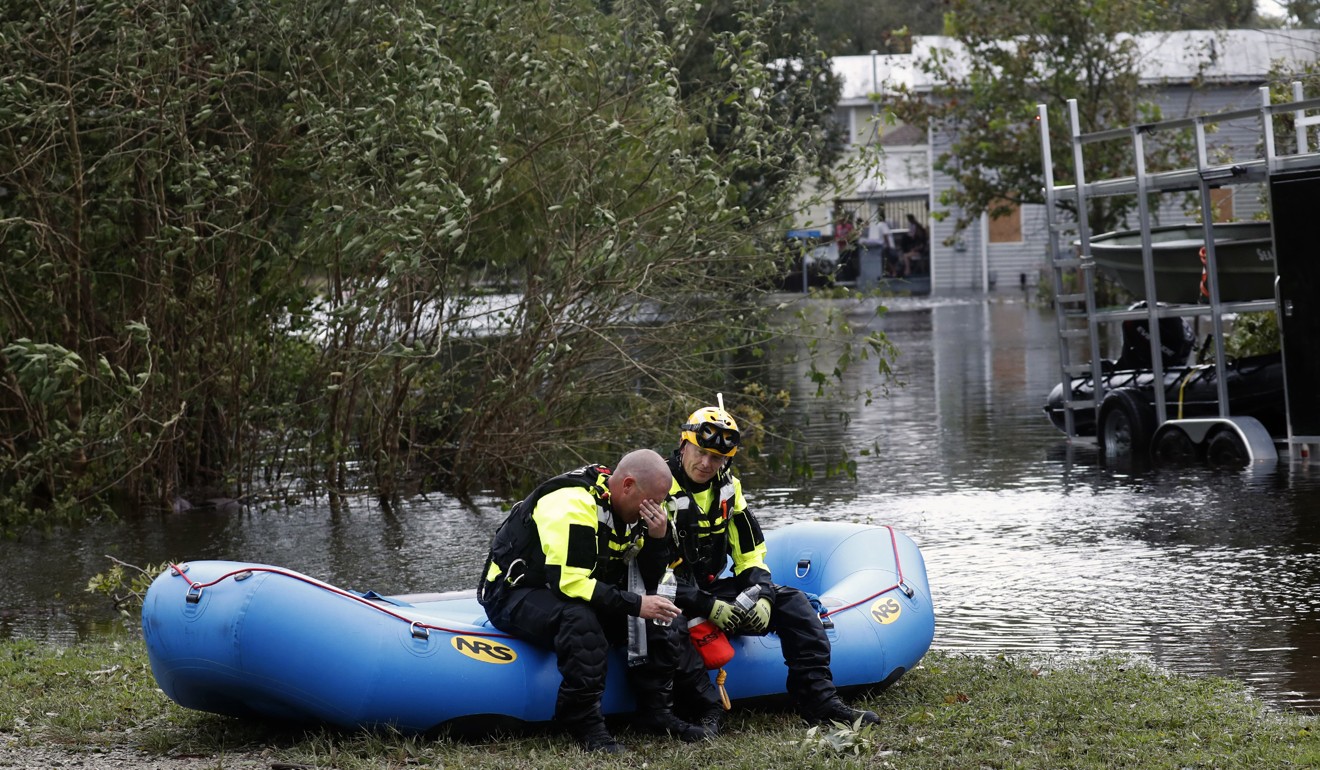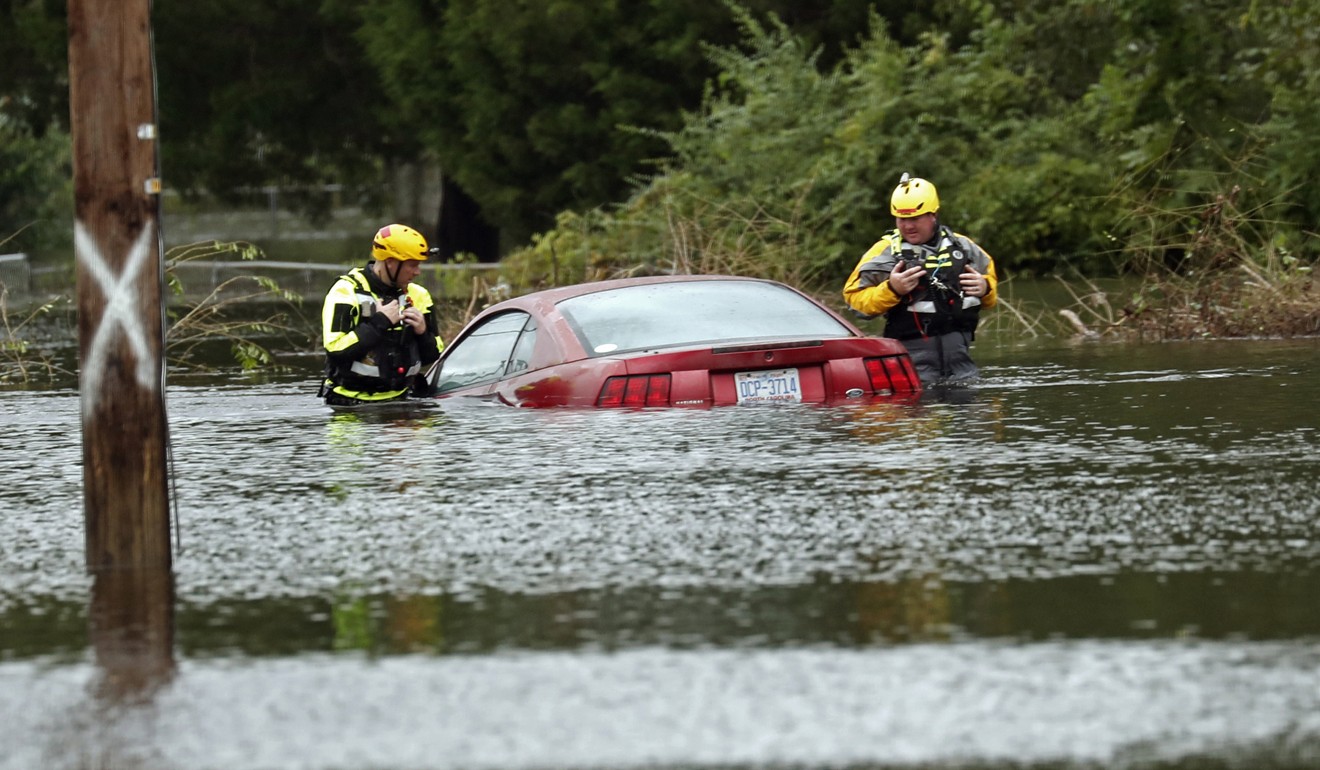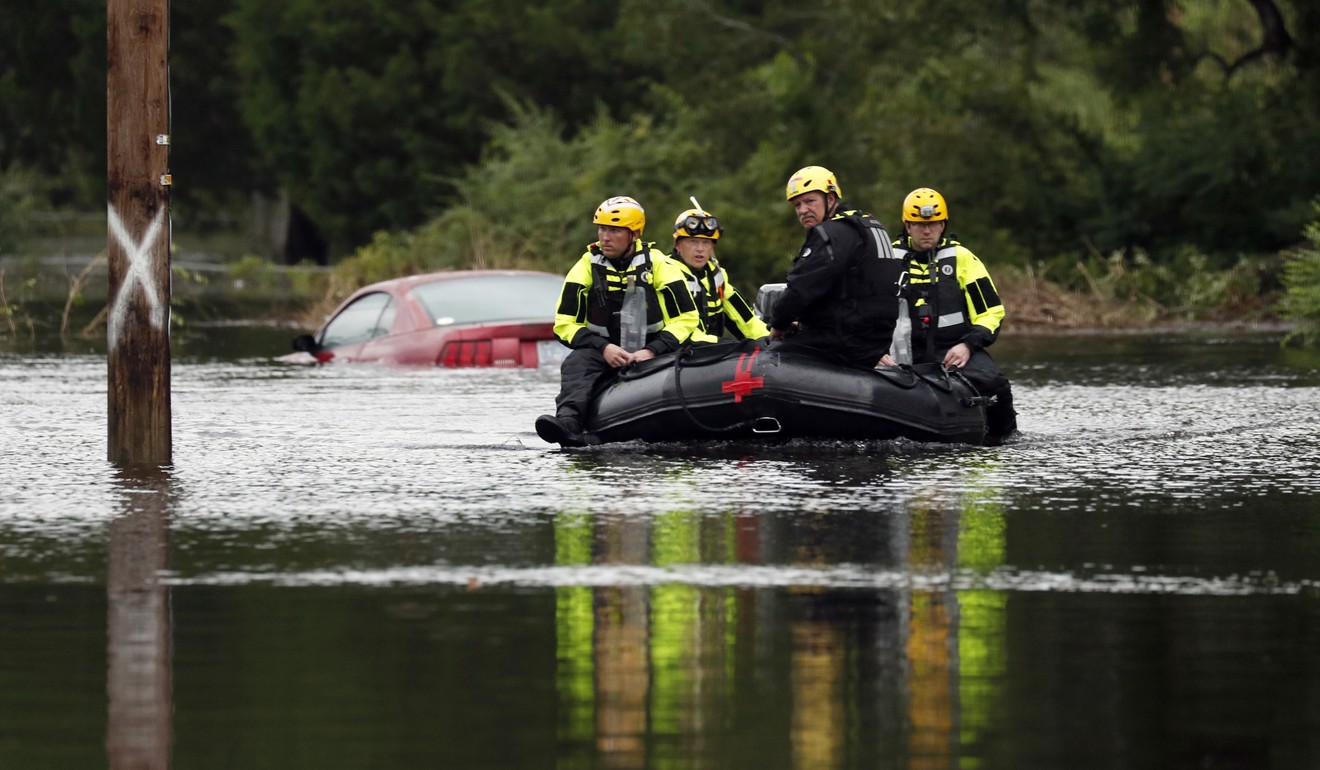
Florence brings ‘epic’ rains and flooding to the Carolinas; death toll at 11
As massive storm stalls over land, fears rise that North Carolina could be in for the most disastrous flooding in its history
Thousands of people living near North Carolina’s rising rivers were ordered evacuated on Saturday as hurricane-turned-tropical storm Florence practically parked itself over land and poured on the rain Saturday, raising fears that the state could be in for the most disastrous flooding in its history.
The death toll climbed to at least 11.
A day after Florence blew ashore in North Carolina with 145kph (90mph) winds, Coast Guard officials reported using helicopters to lift scores of people from rooftops and swamped cars, and rescue crews used inflatable boats to reach others trapped in their swamped homes.

More than 2 feet of rain had fallen in places, and the drenching went on and on, with forecasters saying there could be an additional 1½ feet by the end of the weekend.
Rivers and creeks rose toward historic levels, threatening flash flooding that could devastate communities and endanger dams, roads and bridges.
“I cannot overstate it: Floodwaters are rising, and if you aren’t watching for them you are risking your life,” Governor Roy Cooper said.
In its initial onslaught along the coast, Florence buckled buildings, deluged entire communities and knocked out power to more than 870,000 homes and businesses.
But the storm was shaping up as a two-part disaster, with the second, delayed-action stage consisting of epic inland flooding, caused by rainwater working its way into rivers and streams.
Authorities ordered an immediate evacuation of an estimated 2,800 homes within a mile of a stretch of the Cape Fear River, plus a section of the Little River, because of what they said was “imminent danger” from floodwaters.
The evacuation zone included part of the city of Fayetteville, with a population of 200,000.
Officials in North Carolina’s Harnett County, about 90 miles inland, urged residents of about 1,100 homes to clear out because the Lower Little River was rising toward record levels.

In New Bern, along the coast, homes were completely surrounded by water, and rescuers used inflatable boats to reach people. More than 360 people had been carried to safety since Thursday night amid rising waters from a river swollen by both rain and storm surge.
Kevin Knox and his family were rescued from their flooded brick home with the help of Army Sgt. Johan Mackie, part of a team that was using a phone app to locate people in distress.
Mackie rode in a boat through a flooded neighbourhood, navigating through trees and past a fence post to get to the Knox house.
“Amazing. They did awesome,” said Knox, who was stranded with seven others, including a boy who was carried out in a life vest. “If not we’d be stuck upstairs for the next … how long? I have no idea.”
Across the Trent River from New Bern, Jerry and Jan Andrews returned home after evacuating to find carp flopping in their backyard near the porch stairs. Across the street, Coast Guard helicopters were taking off to rescue stranded people.
Coast Guardsmen said choppers had made about 50 rescues in and around New Bern and Jacksonville as of noon.
The dead included a mother and baby killed when a tree fell on a house in Wilmington, North Carolina. South Carolina recorded its first death from the storm when officials said a 61-year-old woman was killed when her vehicle hit a tree that had fallen across a highway.
Saturday morning Florence was inching west at 4kph (2mph) – not even as fast as a person can walk. Its winds were down to 75kph (45mph).

With the eye of Florence stalled near the coast, the half of the storm still out over the Atlantic continued to collect warm ocean water and dump it on land.
Stream gauges across the region showed water levels steadily rising, with forecasts calling for rivers to crest Sunday and Monday at or near record levels.
The Little River, the Cape Fear, the Lumber, the Neuse, the Waccamaw and the Pee Dee were all projected to rise over their banks, flooding cities and towns.
Along the Lumber River in Lumberton, workers used heavy machinery to dump extra sand on a railbed prone to flooding.
As of noon, Swansboro, North Carolina, had nearly 31 inches of rain, Emerald Isle had over 23, and Wilmington and Goldsboro had about a foot. North Myrtle Beach, South Carolina, had about 7 inches.
Charlotte and Asheville in North Carolina, and Roanoke, Virginia, could also be in for heavy rains as Florence plods inland.
Areas like New Bern also could see an additional 3 to 5 feet of storm surge as high tide combines with the seawater still being pushed ashore by Florence, National Hurricane Centre Director Ken Graham said

The storm interrupted a September rite in the South: college football. Schools cancelled, postponed, switched sites or changed kick-off times because of Florence.
The hurricane Centre said the storm will eventually break up over the southern Appalachians and make a sharp rightward swing to the northeast, its rainy remnants moving into the mid-Atlantic states and New England by the middle of next week.

